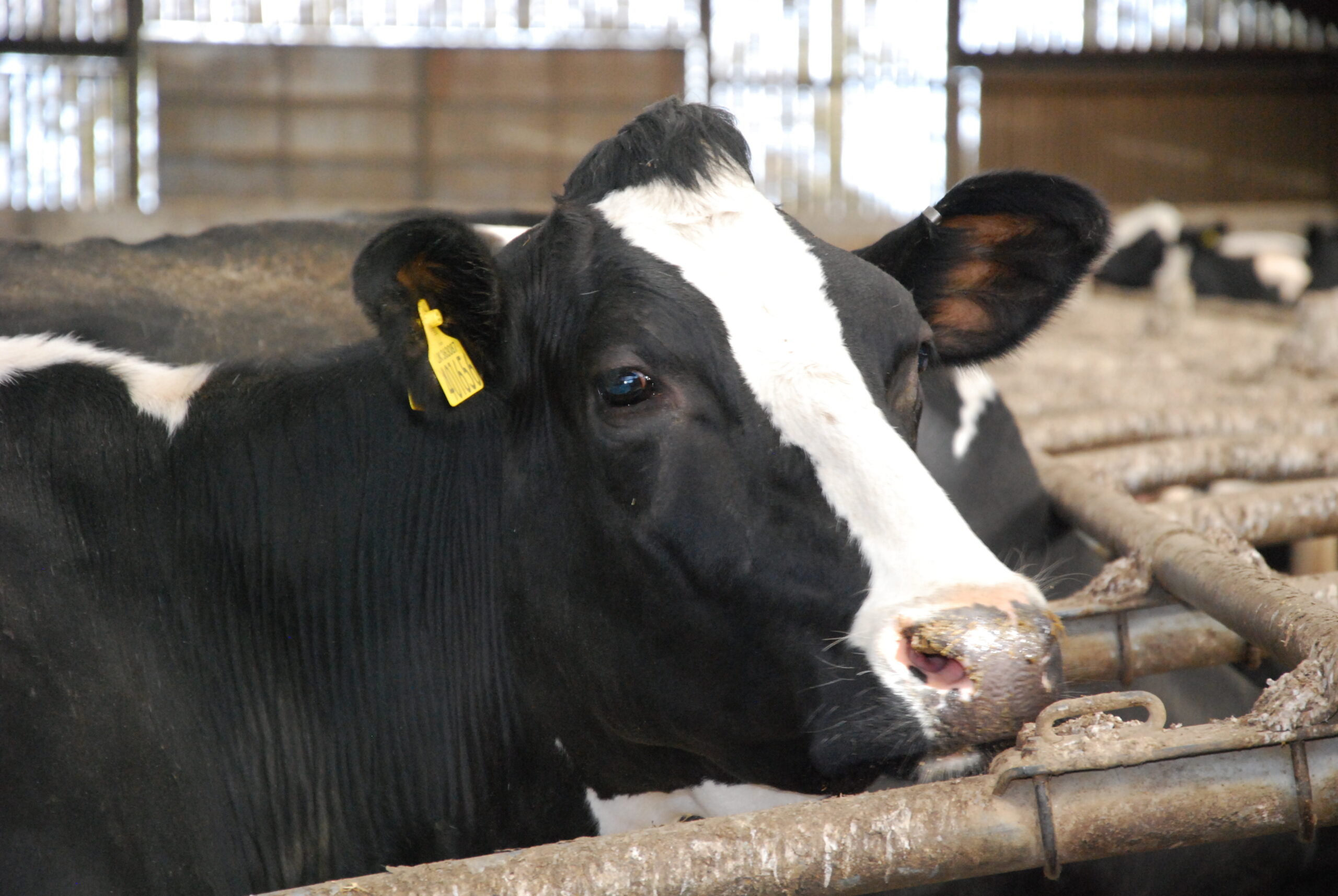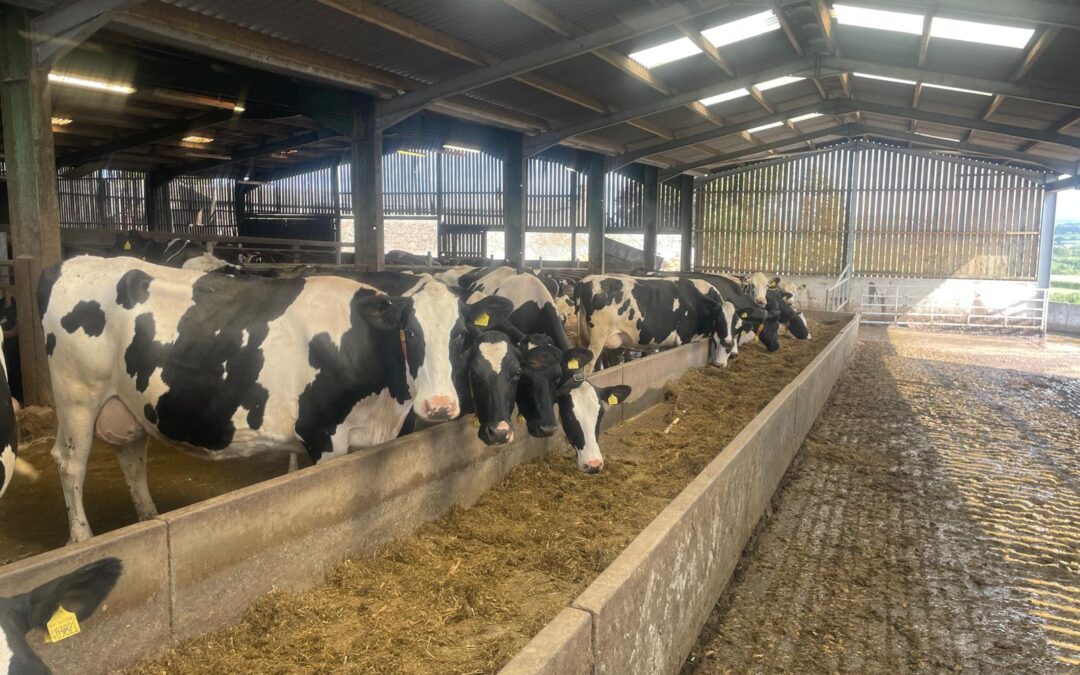Feeding molasses has helped drive feed intakes and milk yield at Backway Farm, Shebbear, in North Devon.
Pete Johns and his sons, Luke and Owen, milk 250 cows twice daily and supply Saputo on a constituent-based contract for Cathedral City Cheddar.
Their all-year-round calving, pedigree Holstein-Friesian Newrock herd averages 11,400 litres at 4.42% butterfat and 3.31% protein from a feed rate of 0.36kg/litre, with 3,000 litres of milk produced from forage.
Cows have been housed full-time for three summers.
“We are a wet farm, and turnout was often delayed. Grass production could be variable, making grazing management difficult for us, and the cows are far more settled now they are
housed on a more consistent ration,” says Pete.
Feeding
The cows are fed a Total Mixed Ration (TMR) formulated to meet maintenance requirement plus 30 litres. One diet is fed to the entire herd twice daily, as it is not practical to split the herd into groups.
The current diet comprises 20kg grass silage, 20kg maize silage, 8.5kg of a Harpers Feeds blend, 1kg Regumaize 44 molasses blend, 0.25kg of fat and minerals. Cows are topped up to yield in the parlour with a Harpers 16% protein nut.
The Regumaize is stored in a 12-tonne tank on a loft stand. It is straight forward to reverse the feeder wagon under the tank and add the molasses to the mix, says Pete.
Pete is on his second tank, and the current one is 10 years old.

Improvements
Pete believes feeding molasses has been beneficial in balancing the ration, driving higher feed intakes, and supporting rumen health and milk yield.
“While starch drives milk yield, sugars help drive the rumen. Sugars come from grass silage, and as we feed a mix of maize and grass, there was never enough sugar in the diet.”
He adds: “Increasing sugars has helped support higher intakes and milk yields while being safe for the rumen. Adding molasses and water to the diet has stopped all sorting.
Therefore, there is no variable muck or the odd upset cow. In addition, feeding a molassed blend gives a cheaper source of protein than other products like soya.”
Pete believes the molasses blend helps balance out variation in silages and different cuts as the rumen microbes have the energy supply they need.
He has no plans to remove the molasses from the ration. “We are producing high yields of solids, which is what our contract requires, and I won’t risk anything that might affect milk quality.”
Glen Johns, Sales Director at Harpers Feeds, comments: “When a diet contains 50% maize-silage as its forage proportion, Regumaize 44 fits every time. Maize silage is low in sugar and protein, therefore, Regumaize 44 gives the cow instant sugar from the molasses and Rumen Degradable Protein (RDP) from the regulated release protein.”
Speak to your Harpers Feeds Specialist to find out more.






